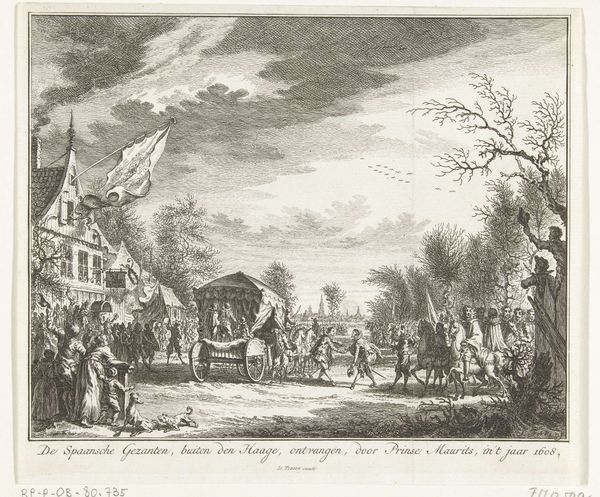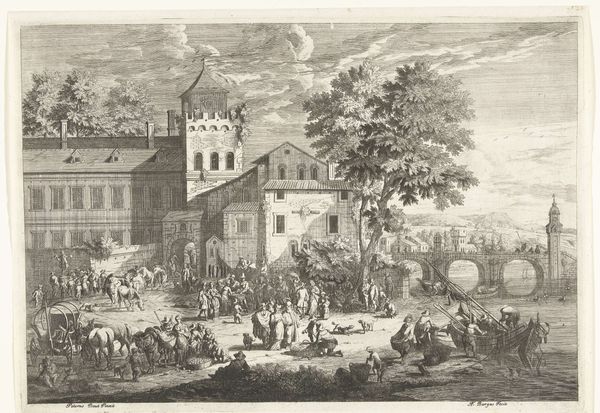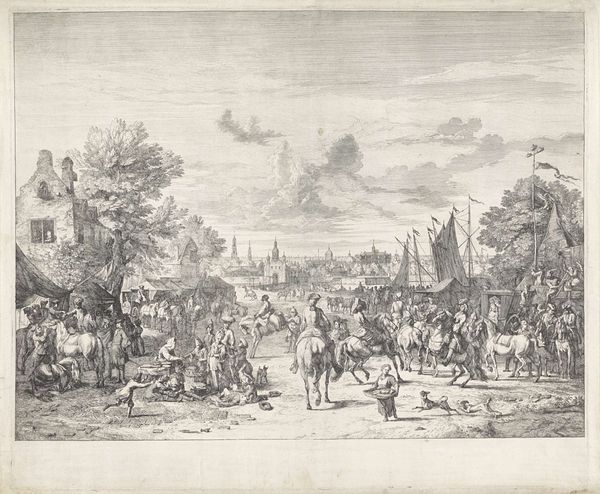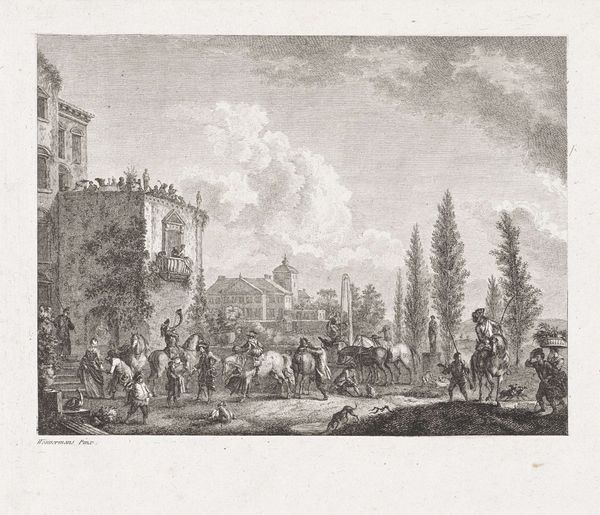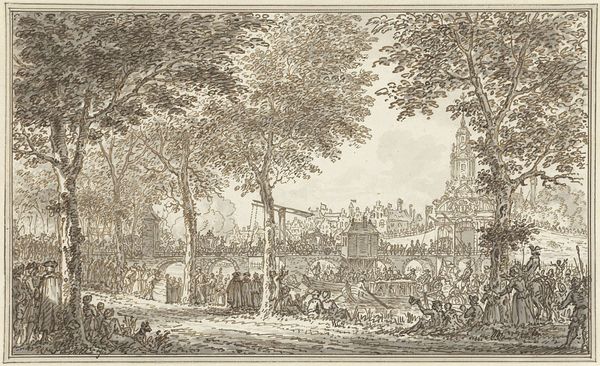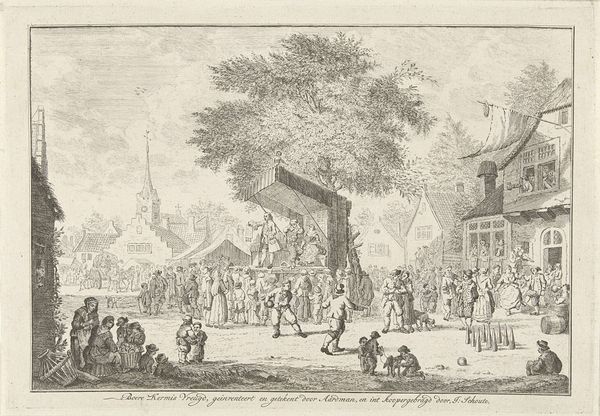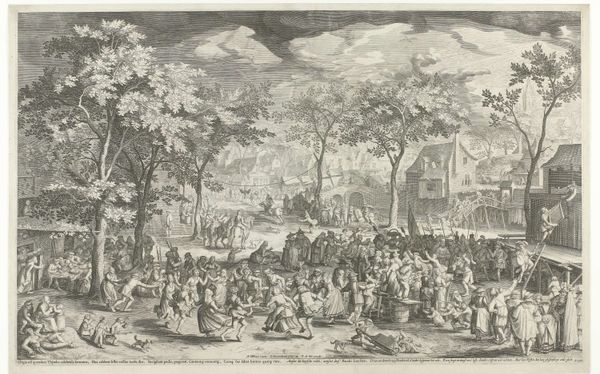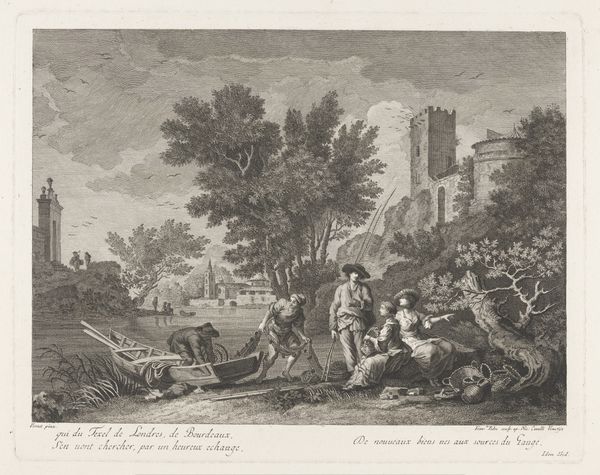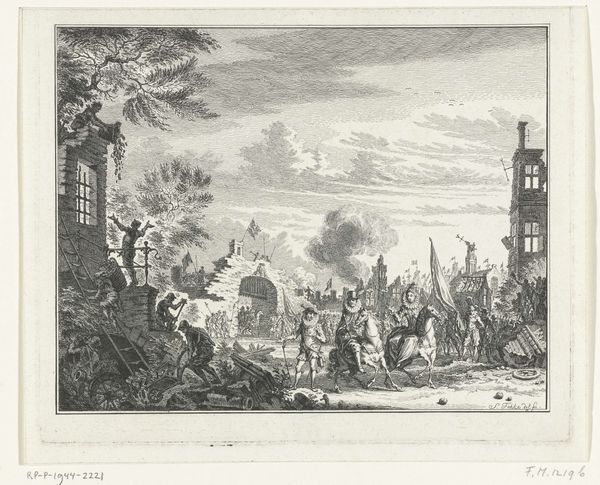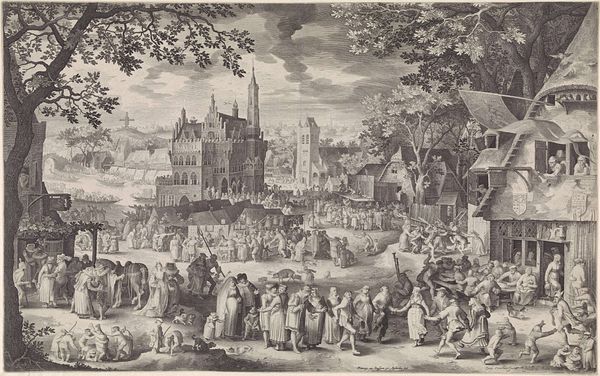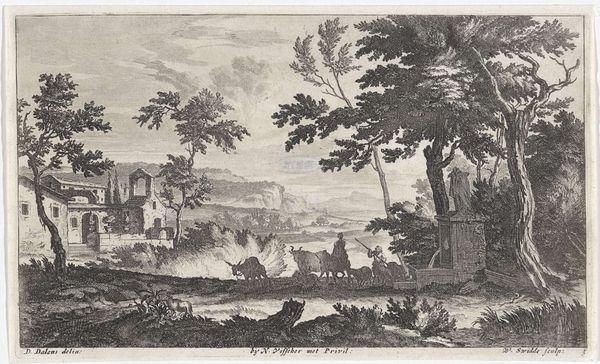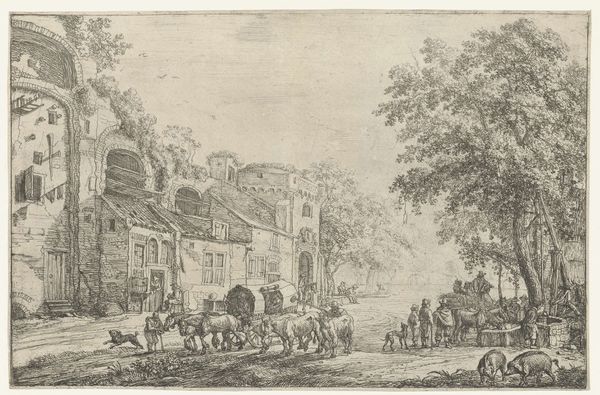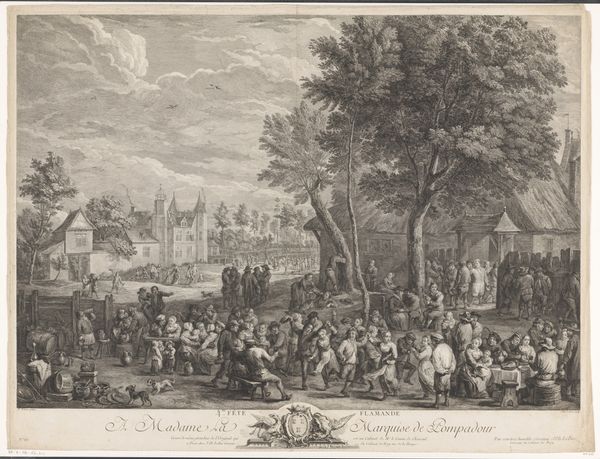
print, etching, engraving
#
baroque
#
pen drawing
# print
#
etching
#
old engraving style
#
landscape
#
genre-painting
#
engraving
Dimensions: height 304 mm, width 425 mm
Copyright: Rijks Museum: Open Domain
Curator: This is an etching by Franciscus de Bargas, dating sometime between 1660 and 1699. The print is titled, "Village Scene with Church Where Cleric Awaits a Wedding Couple". Editor: My first impression is a vibrant hub of communal life captured through remarkably delicate lines. The composition is incredibly detailed, like a bustling diorama teeming with figures and foliage, animals and architecture all intertwined. Curator: Indeed. It's interesting to observe the blending of religious and secular life that’s happening here. You have the prominent church as the focal point but also daily life unfolding all around it, in genre-painting style. This points to the powerful social role that the church played in the Dutch Golden Age. Editor: And you see that reflected in the materials used; the etching and engraving—replicable mediums—democratized access to such imagery. I’m struck by the craftsmanship involved in creating this. To transfer this detail from observation to a copper plate through manual labor speaks to the value placed on artisanal skill at this time. How do we frame labor in this imagery? Curator: That’s an excellent point. Prints like these circulated widely and helped shape ideas about Dutch identity, piety, and social order. Notice the way that the artist chose to center a wedding. That reaffirms dominant ideas about marriage, family, and religion. Editor: But look at how much action unfolds on the outskirts: Animals graze and families cluster in small groups. So it's a testament to tradition as much as it's also documenting material everydayness. I see that the texture in the image seems determined to capture as much light as possible, as if the light itself has substance here, becoming palpable. Curator: The baroque-style landscape grounds it. The high level of detail makes it look like a true window into Dutch life. I wonder what audience they anticipated back then and what this meant to them in its original moment. Editor: I appreciate this chance to delve into a print so enmeshed with social structures, even at the level of its material production and the role it played within local markets. Curator: Agreed, considering its historical place in cementing beliefs really allows for understanding how such works affected the society that they reflected.
Comments
No comments
Be the first to comment and join the conversation on the ultimate creative platform.
